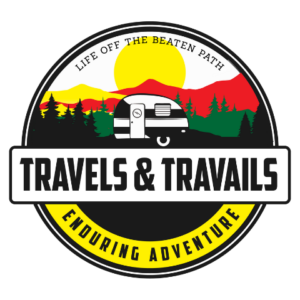As a woman (or a man for that matter) I think that one of the advantages of having a camper van is that, if I have a problem, I can quickly get to the van’s driver’s seat and get out of Dodge. For that reason, (and others) I’ve been researching them for quite some time now. If you’re considering a camper van, like I am, you are probably wondering, “What do camper vans look like inside?”
Inside, camper vans typically have a sleeping area, kitchenette, and bathroom. Essenti, ally, inside they look like a very tiny house on wheels. And they can often be customized to suit your needs.
Here we’ll discuss camper van interiors so that you can make a choice that works for you.
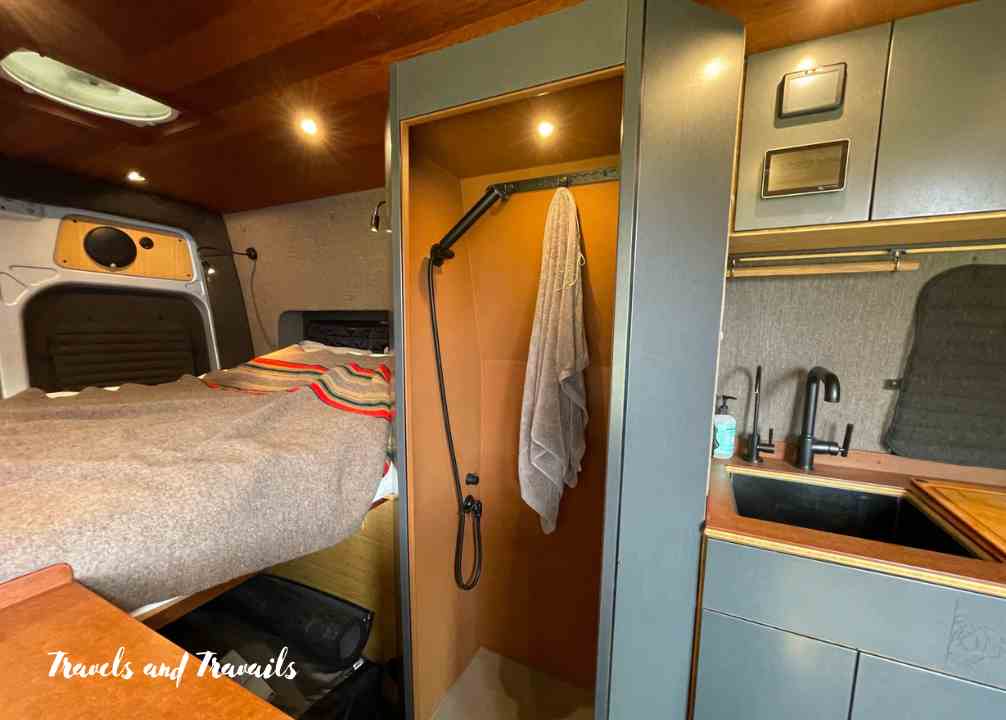
Choosing the Right Features
I don’t know about you, but there are some features that are must-haves for my ultimate camper van experience. I believe that choosing the right features for your camper van is crucial to ensure a comfortable, convenient, and safe living experience.
Since camper vans are compact, every inch of space must be utilized efficiently, and you should select features that align with this goal.
You will need functional and accessible sleeping areas, kitchenettes, and storage space. Additionally, your electrical and climate control systems must be reliable and well-designed to ensure comfort and convenience.
You should also consider safety features such as smoke detectors and carbon monoxide alarms since you’ll be confined to such a small space.
Overall, selecting the right features is essential to create a comfortable, safe, and enjoyable living experience in your camper van.
If you’re interested in looking at camper van layouts, check out this article that I wrote.
Sleeping Area

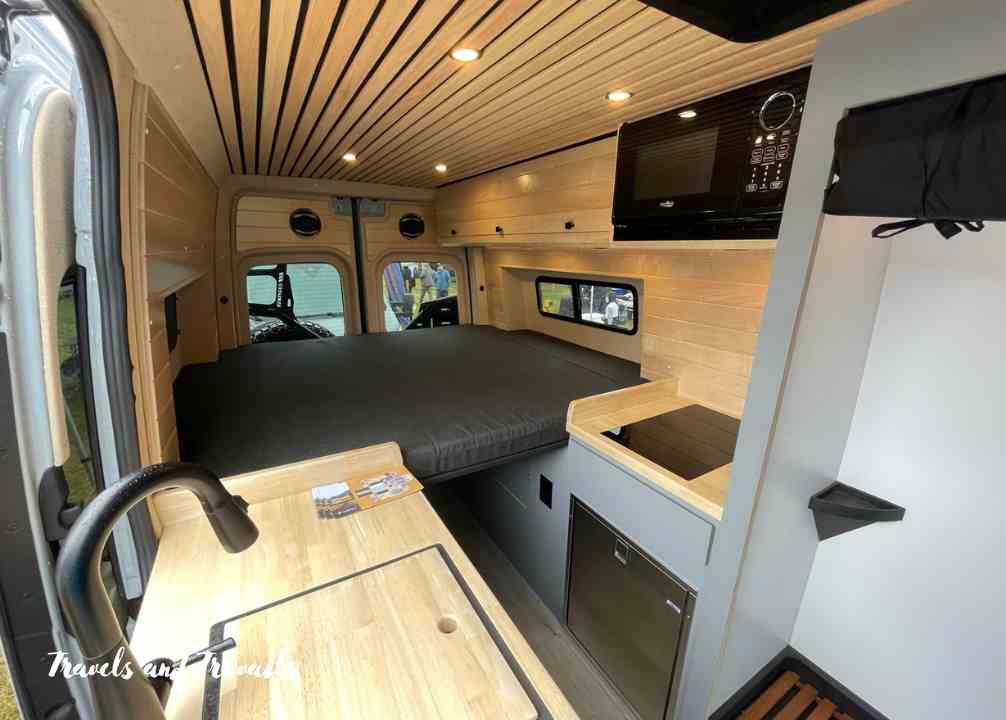
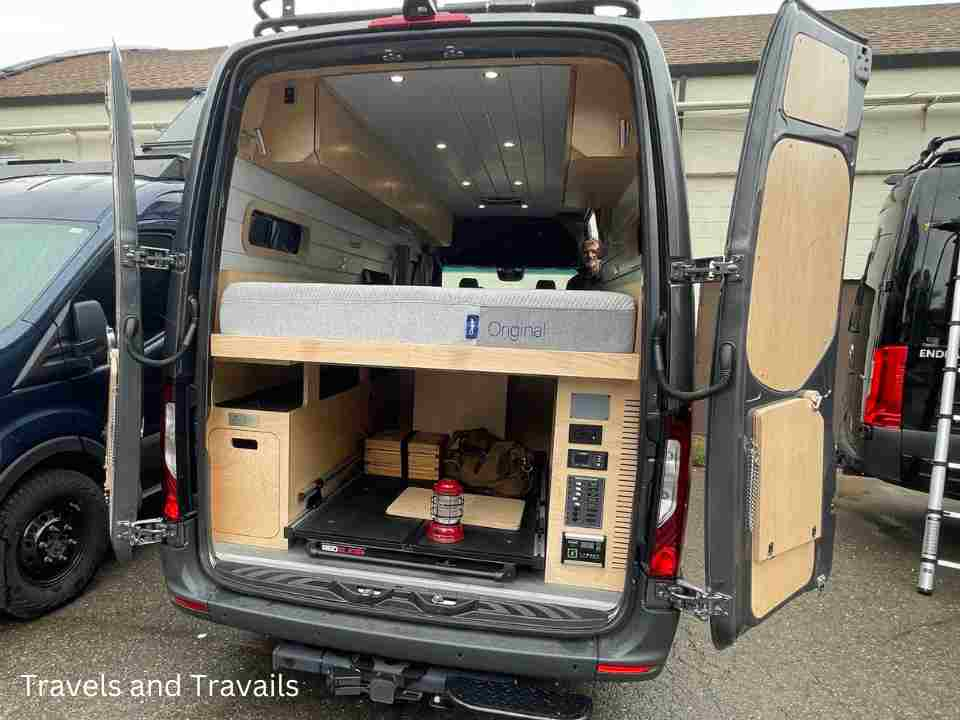
When you’re camping (or pretty much anytime) a comfortable sleeping area is critical. At the same time, you’ll want to pack the most into your van so you’ll have to make some choices. There are trade-offs with any RV and more so with camper vans since they are so compact. Your mission, if you choose to accept it, is to weigh the balance between comfort and convenience.
Types of Sleeping Areas
There are several types of camper van sleeping areas; fixed beds, fold-out beds, and convertible beds. Let’s talk about those.
Fixed bed
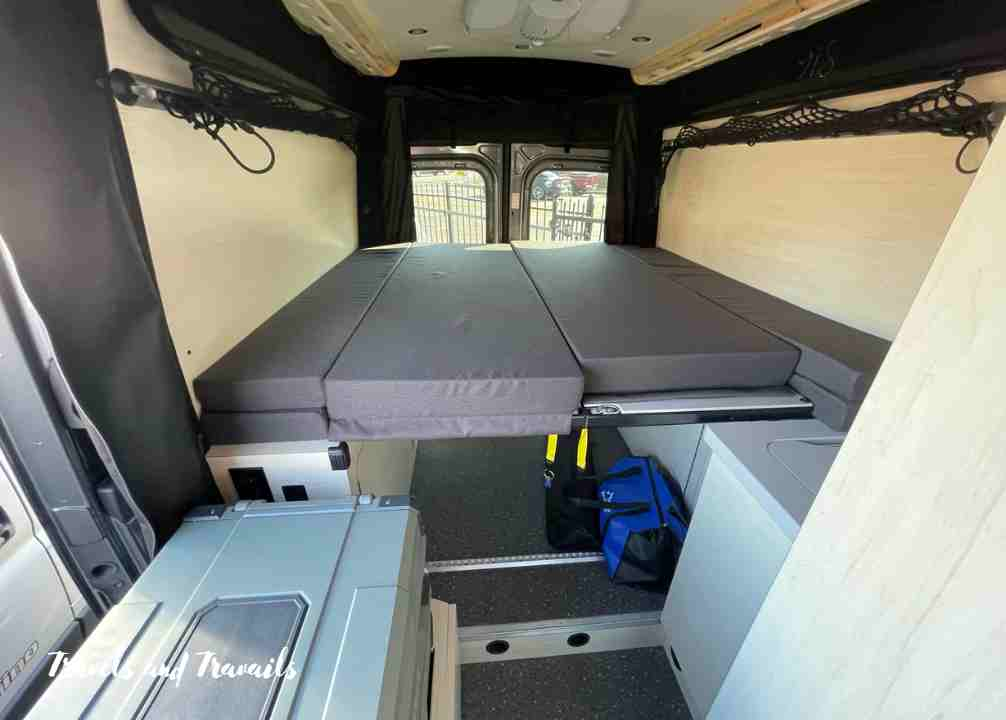
A fixed bed is a permanent bed built into the camper van. I just really like the idea of having a dedicated sleeping area that’s always set up and ready to go.
Having a fixed bed in your camper van has several pros and cons to consider. On the plus side, a fixed bed is always set up and ready to use. You don’t have to worry about setting it up and taking it down every day, and it provides more stability and comfort compared to some other types of beds.
Plus, a fixed bed can be designed to maximize storage space underneath, which is essential in a compact living space. However, there are also some cons to having a fixed bed. For instance, it takes up a fixed amount of space, which may limit the overall layout and design of your camper van.
Additionally, it may be more challenging to access the storage space underneath the bed, and it may not be as versatile as other types of beds that can be converted or moved around.
Fold-out bed
A fold-out bed for your camper van can offer several advantages, such as saving on space and money. One of the most significant benefits is that it’s versatile and can be designed to fit various sizes of camper vans.
However, there are also some downsides to consider. Setting up and taking down a fold-out bed can be time-consuming, especially if you plan to do it multiple times per day. Also, a fold-out bed may not provide the same level of comfort as a permanent bed option, such as a fixed or pop-up roof bed.
Lastly, a fold-out bed can take up space during the day, limiting your storage options. Over time, the mechanism used to fold the bed in and out may also require maintenance or repairs.
There are several types of fold-out beds.
Sofa bed
This is a common fold-out bed that converts into a sofa during the day. It’s an excellent space-saving option that can be easily stowed away when not in use.
Bunk bed
A bunk bed is a fold-out bed option that allows you to maximize vertical space in your camper van. This bed type is especially useful for families or groups of travelers. You can find a bunk bed that folds up into the wall or if you are designing your own camper van you can make one.
Dinette bed
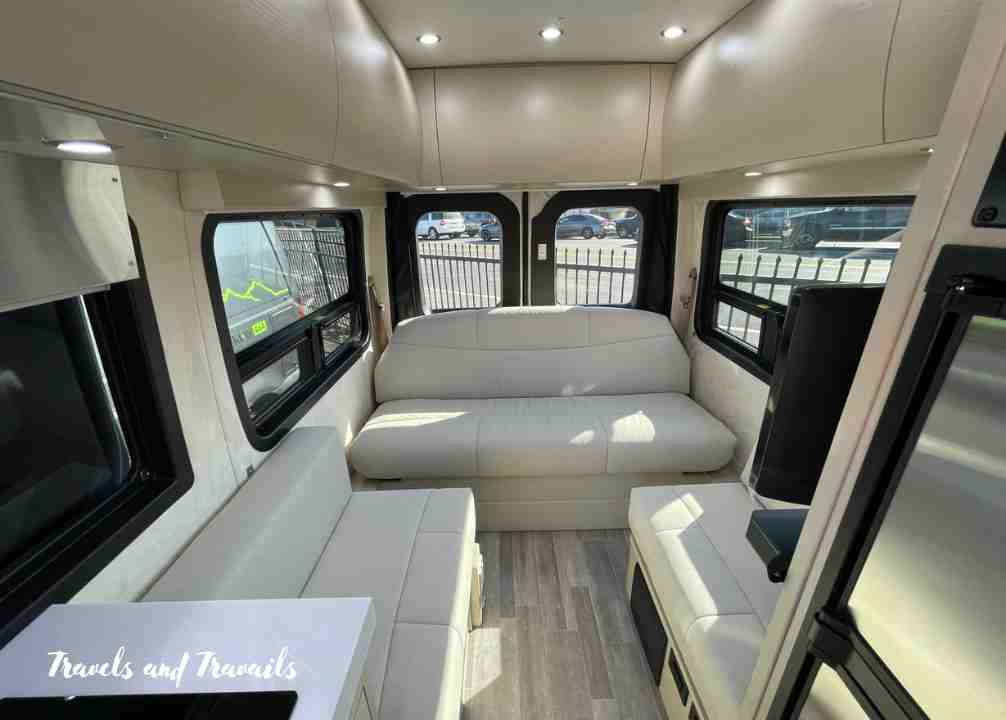
A dinette bed is another popular option that converts into a dining table during the day. It’s a great option for those who prefer a dedicated eating area in their camper van.
Hammock bed
A hammock bed is a unique option that’s suspended from the ceiling or walls of your camper van. It’s a lightweight and space-saving choice that can provide a cozy and comfortable sleeping experience.
Murphy bed
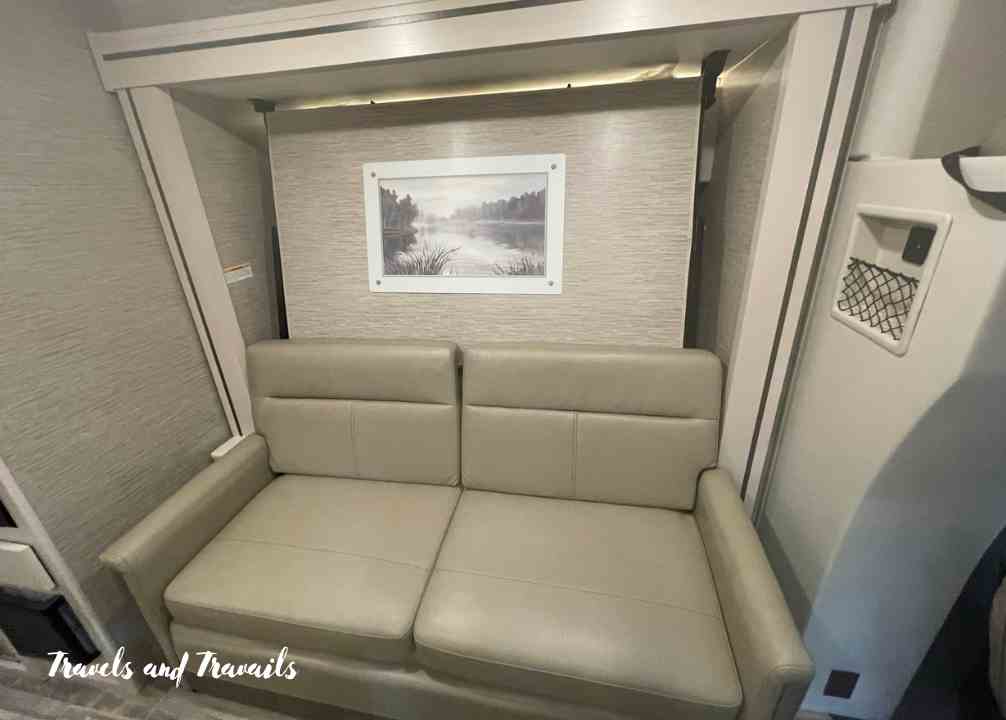
The Murphy bed is the ultimate fold-out bed. It’s designed to be mounted on the wall and can be easily folded up when not in use. It’s an excellent option for those who prefer a permanent bed that’s easy to set up and take down.
Convertible bed
Similar to a fold-out bed, a convertible bed can be turned into a bed at night. They are just as inventive and convenient as fold-out beds. The pros and cons of a convertible bed are similar to a fold-out bed, so I won’t belabor that.
Bench seat bed
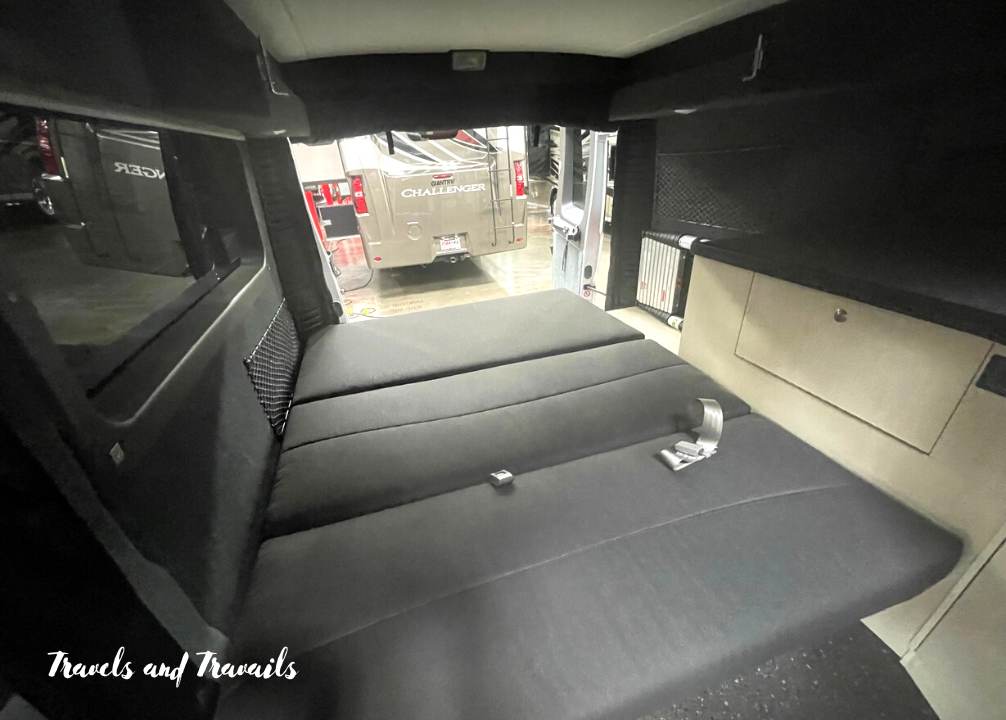
This is a common convertible bed that’s created by folding down the backrest of a bench seat. It’s a simple and affordable option that can also provide additional seating during the day.
Pop-up roof bed
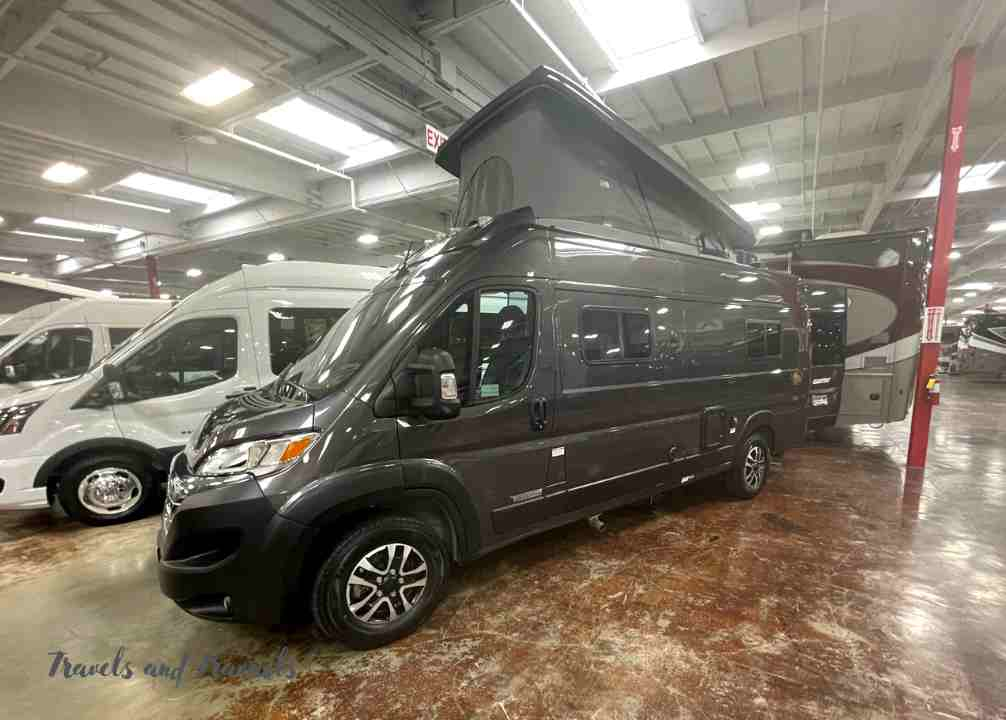
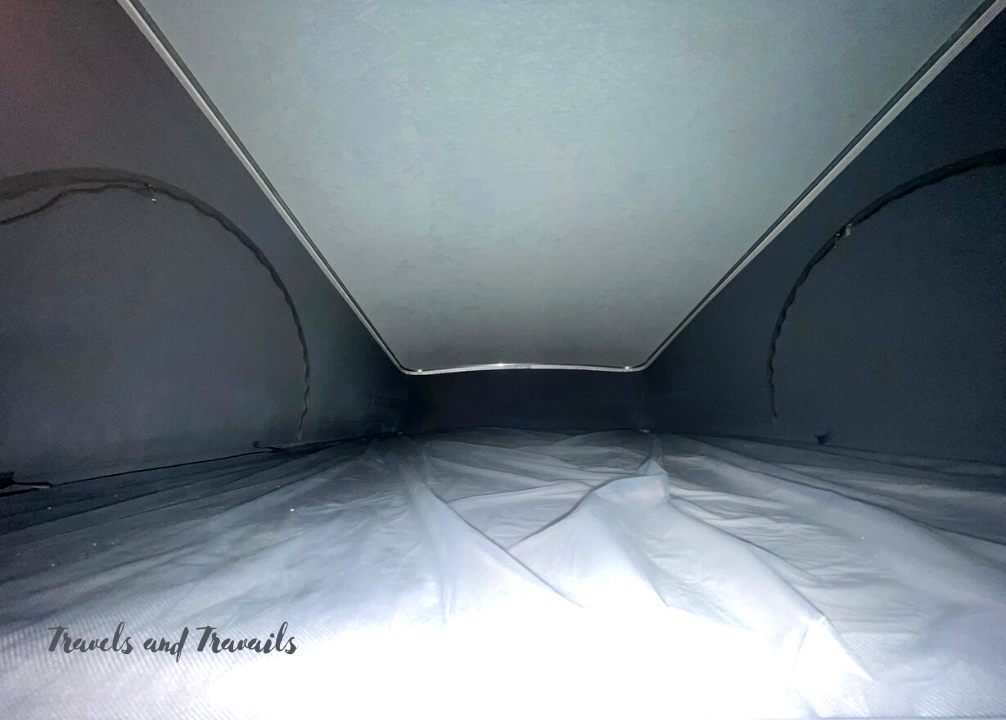
A pop-up roof bed is a convertible bed that’s stored in the roof of your camper van and can be lowered down at night for sleeping. This option provides a dedicated sleeping area that’s separate from the rest of the living space.
Folding cot bed
A folding cot bed is a portable and lightweight option that can be easily stored and transported in your camper van. This option is ideal for those who want a comfortable sleeping area that’s easy to set up and take down.
Pull-out bed
A pull-out bed is a convertible bed that’s stored underneath a bench or sofa and can be pulled out for sleeping. This option is useful for those who want to maximize their living space during the day.
Sliding bed
A sliding bed is a convertible bed that’s mounted on rails and can be slid out from underneath a platform. This option is ideal for those who want a dedicated sleeping area that’s separate from the rest of the living space.
Kitchen
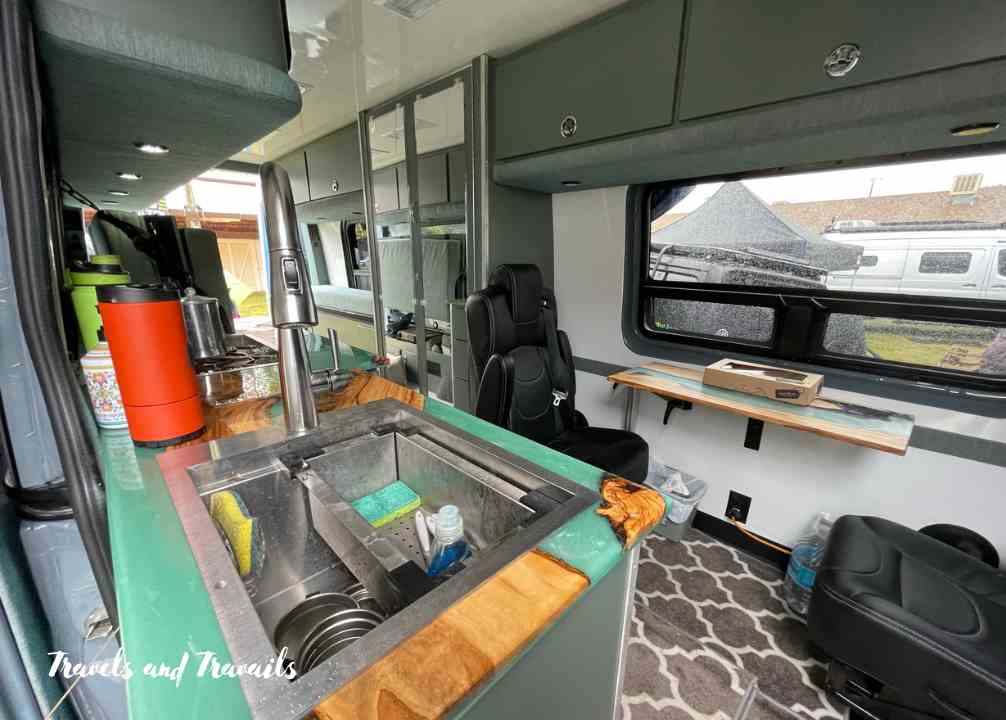
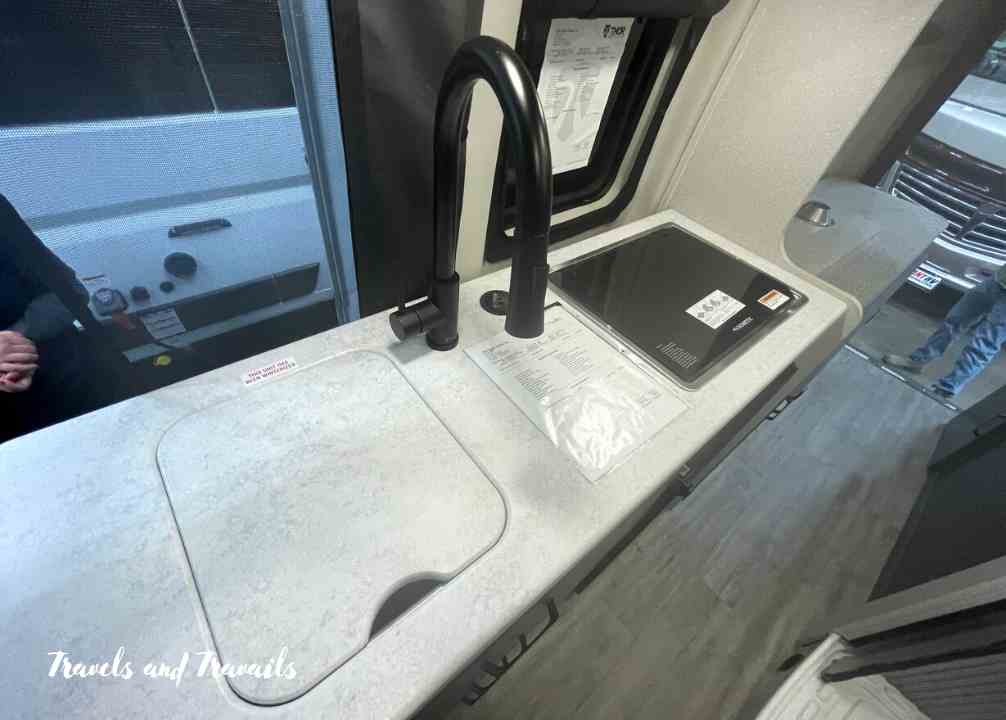
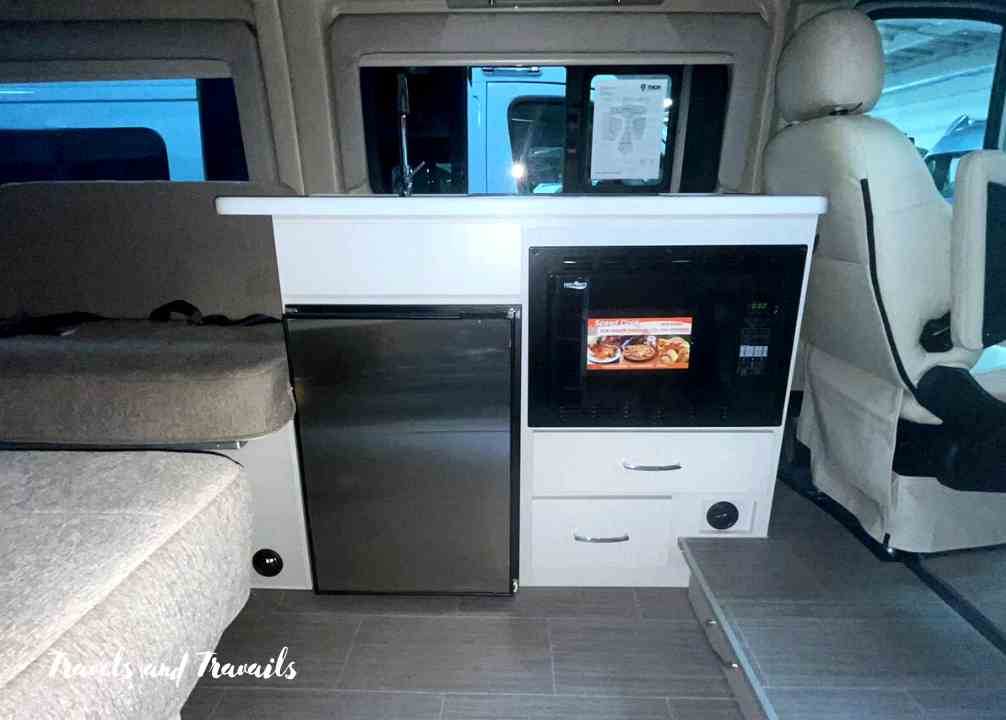
A kitchen is an essential feature in a camper van because it provides you with the convenience of cooking your own meals while on the road. When you’re traveling in a camper van, you may not always have access to restaurants or fast food, which makes having a kitchen an invaluable asset. With a fully equipped kitchen, you can prepare your meals just the way you like them, using your preferred ingredients and cooking methods.
Having a kitchen in your camper van also allows you to save money on food expenses. Eating out can be costly, especially if you’re traveling for an extended period. By cooking your meals in your camper van, you can control your food budget and allocate your funds to other travel-related expenses.
If you love to cook, then having a larger kitchen space will be important to you. I don’t love to cook, so I just need the basics.
What You Need in a Kitchen
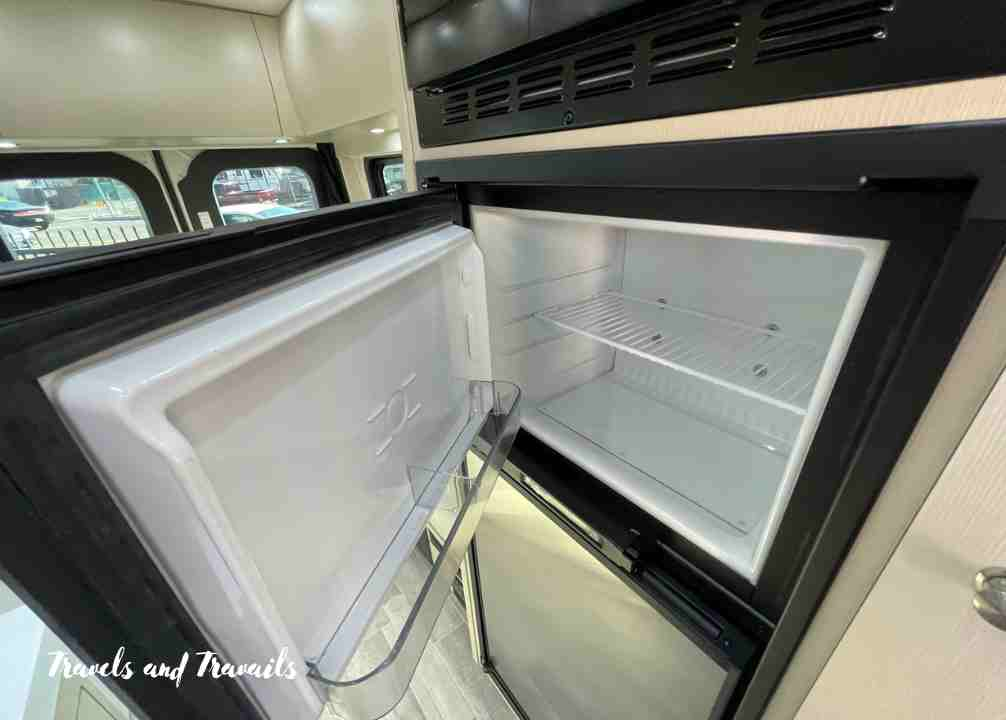
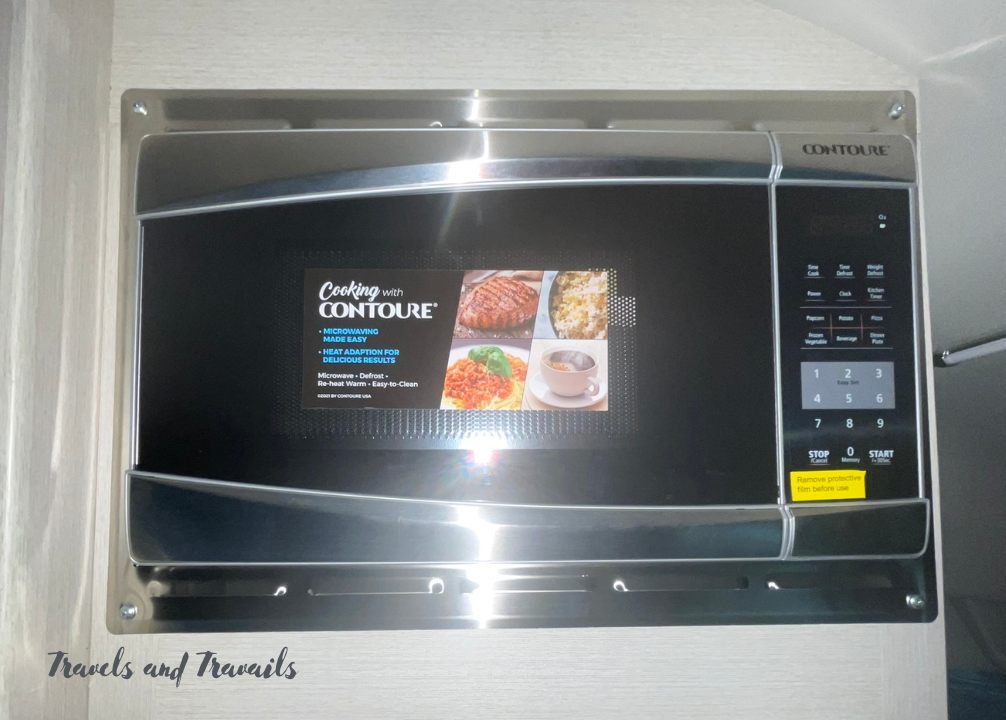
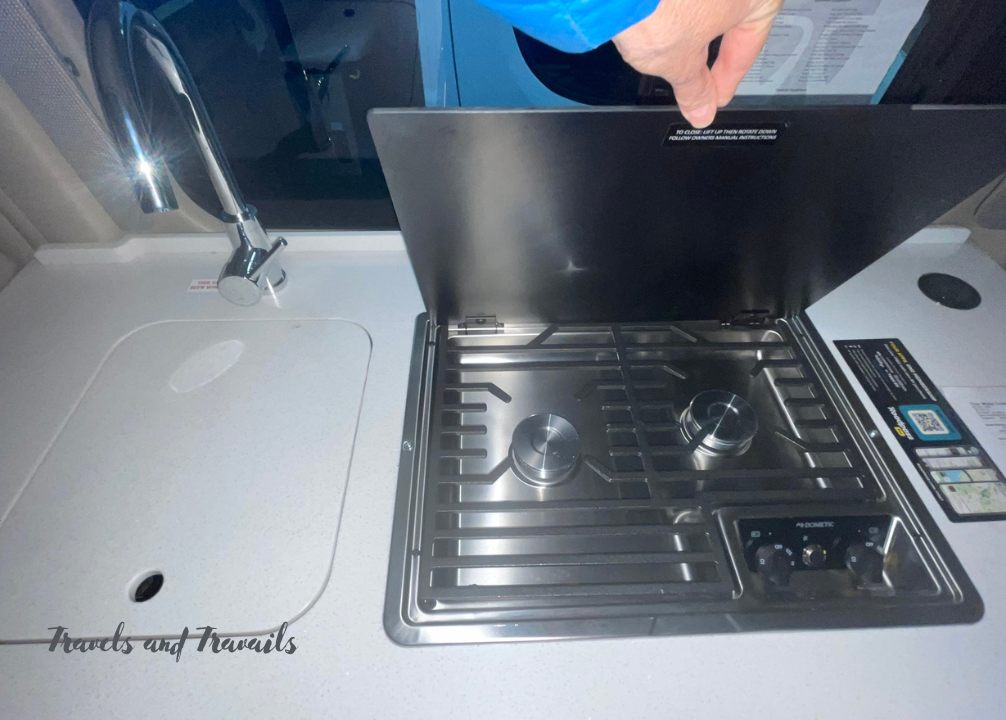
One thing to consider is what appliances will you use to cook. Most camper vans are built with a stove, a refrigerator, and a sink. You’ll find that storage for plates, utensils, and cookware will be available, but limited. Counter space is usually at a premium. Some camper vans incorporate a space-saving cooktop and sink with a cover so that the space can multitask.
If you’re interested in what types of appliances you can use in a camper van kitchen, read the article that I wrote.
Bathroom
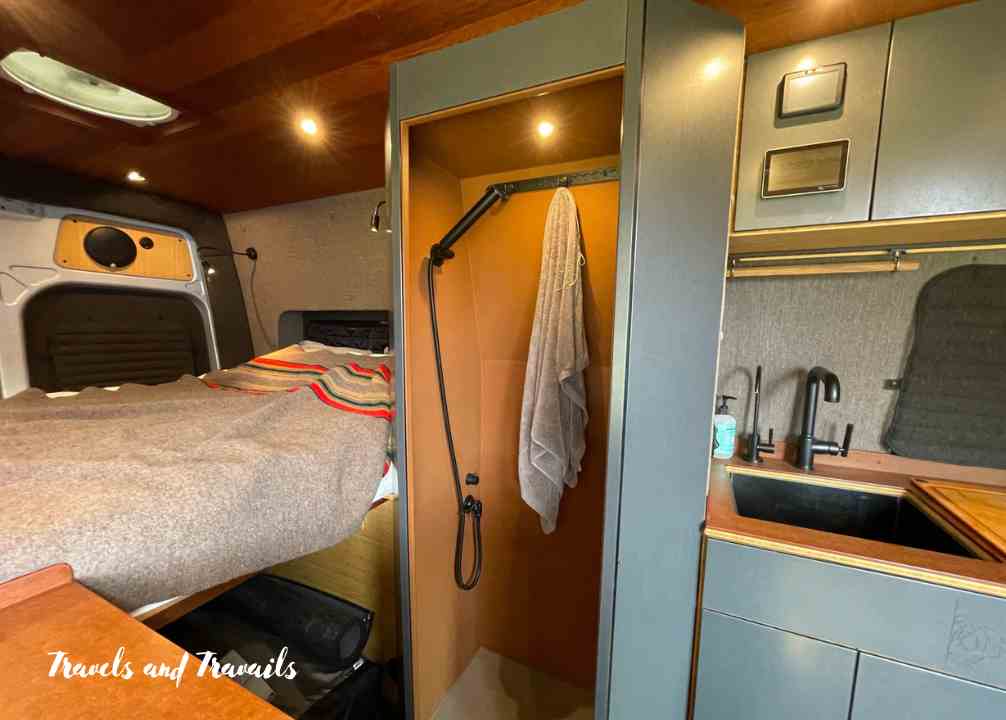
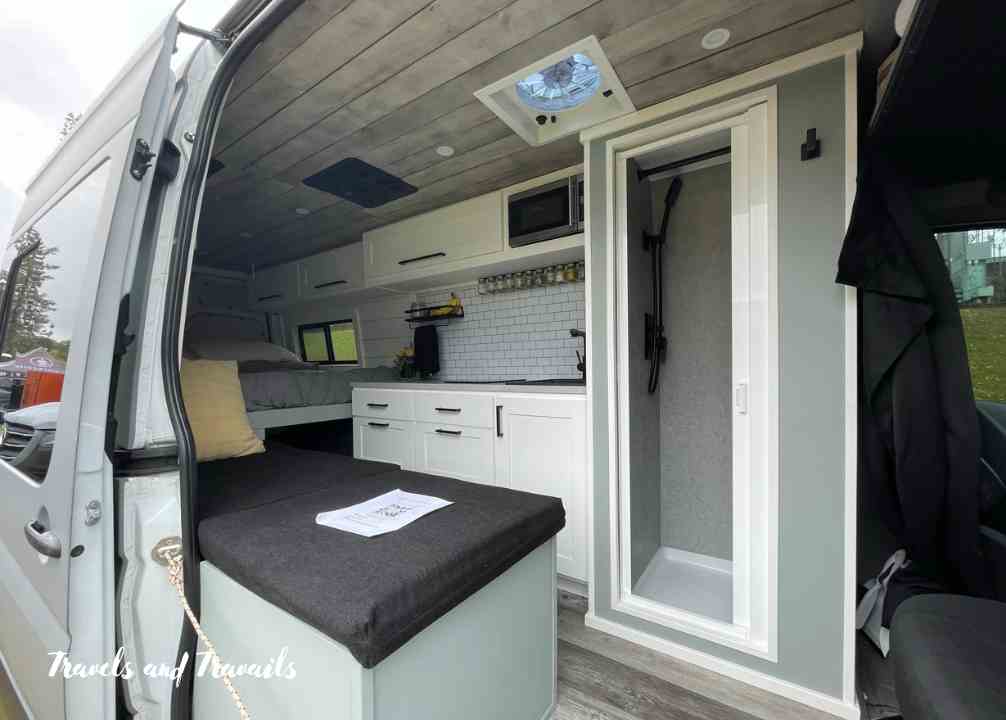
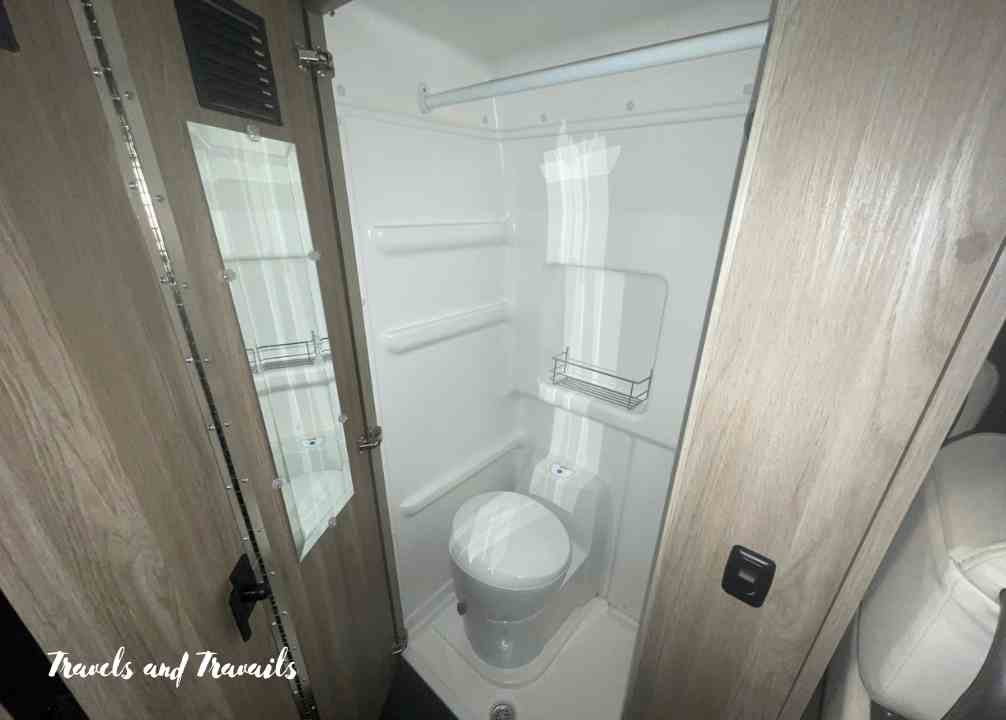
To me, a bathroom is an essential part of the camper van. In reality, a large bathroom is impractical, but I have seen some that made really good use of the small space.
For me, the minimum requirement is a toilet, a shower, and a small sink – usually a wet bath. Some camper vans forgo the sink and expect you to wash your hands in the kitchen sink. When we were traveling in New Zealand, we rented a camper van like that. I thought it was disgusting, but it might not bother you.
There are varying levels of privacy in campervans. Most have solid doors, but some might just have a curtain or a flimsy folding door.
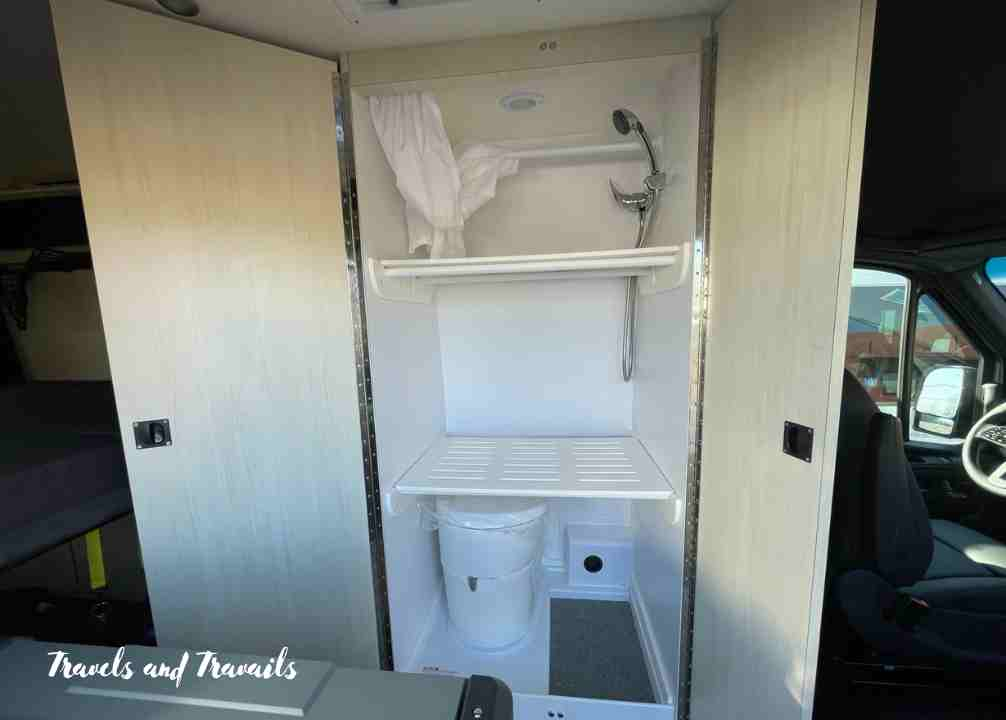
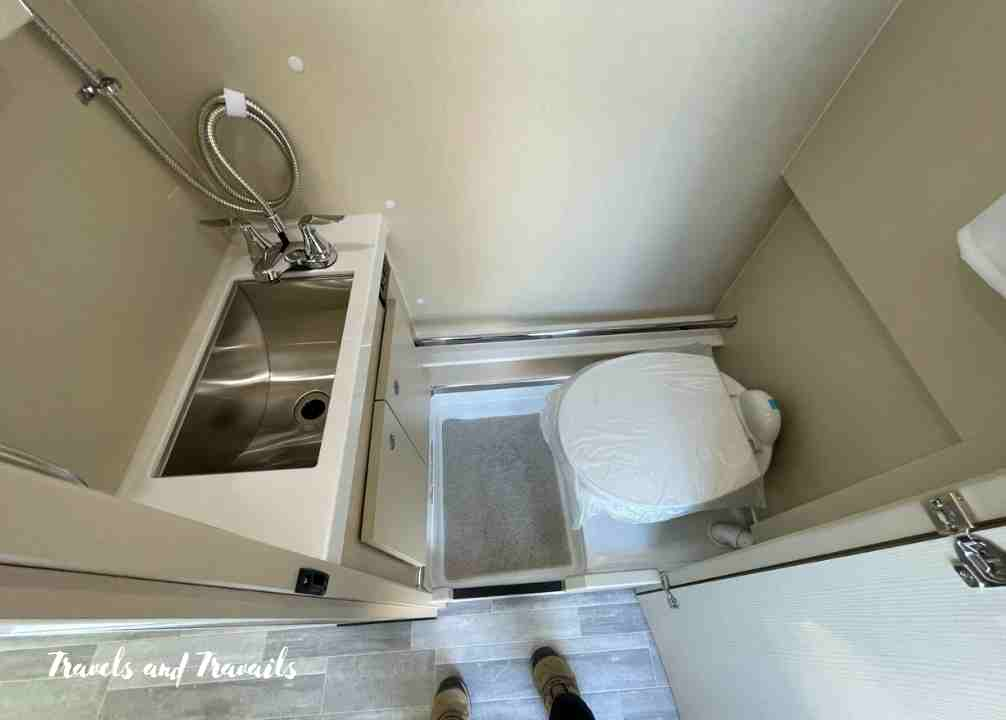
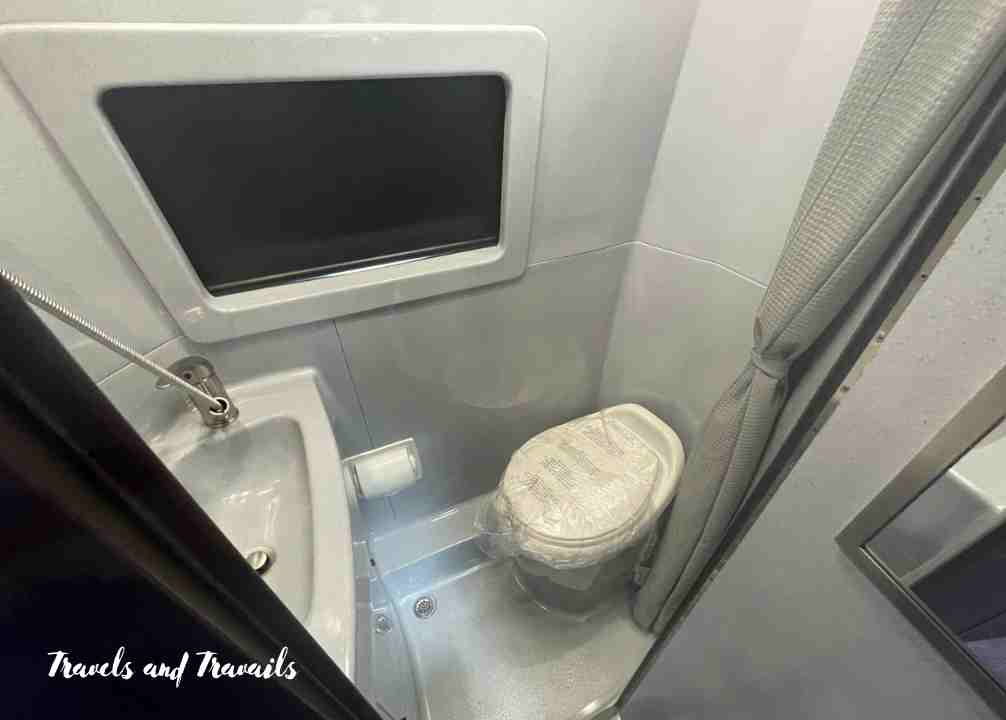
Some camper van bathrooms are tiny and you can’t stand up in them. I’ve noticed this on several of the compact four-wheel or all-wheel driver camper vans. In many of these, the bathroom doubles as storage space.
Generally, camper van toilets use water and empty into a holding tank. However, there are other options. If you’d like to know about those, read this article.
Conclusion
Having the right features in your camper van interior can make all the difference in ensuring a comfortable and enjoyable road trip experience. From sleeping arrangements to kitchen setups to storage solutions, there are numerous features to consider when designing your camper van interior. By thinking through your specific needs and preferences, you can create a space that meets all your requirements and allows you to travel with ease and convenience. Whether you’re a seasoned camper van traveler or new to the lifestyle, prioritizing these must-have features will ensure that you’re road trip ready and fully equipped to hit the open road with confidence.
